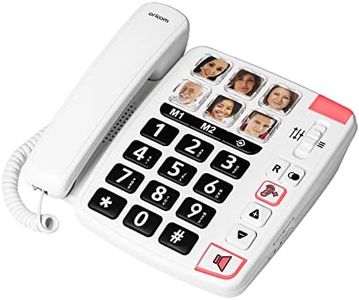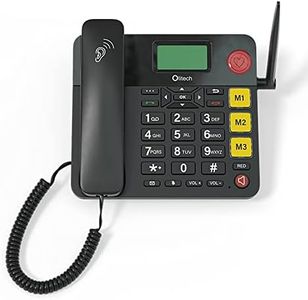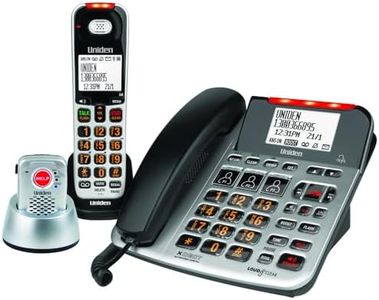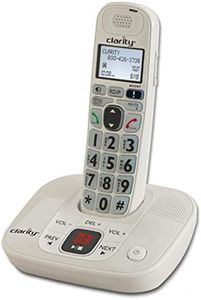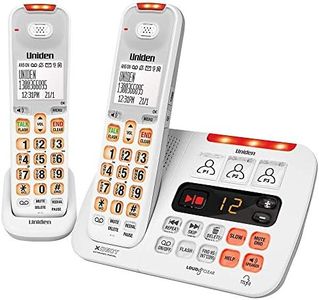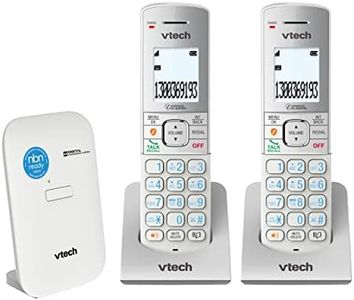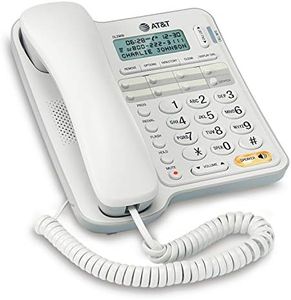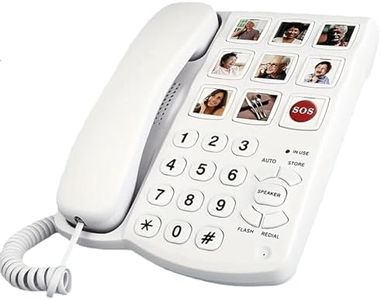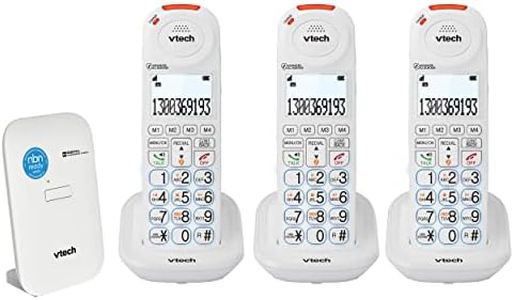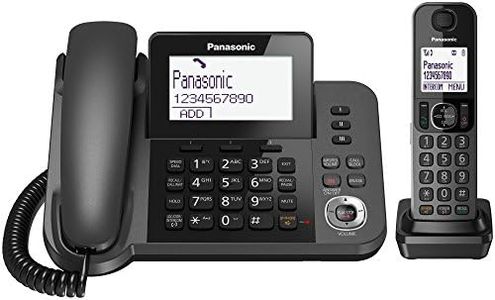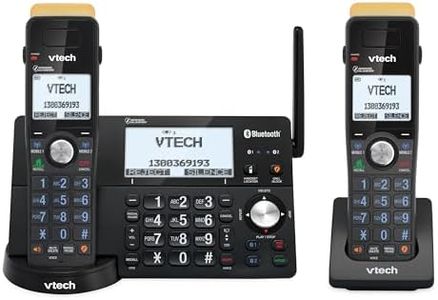We Use CookiesWe use cookies to enhance the security, performance,
functionality and for analytical and promotional activities. By continuing to browse this site you
are agreeing to our privacy policy
10 Best Landline Phones For Seniors
From leading brands and best sellers available on the web.Buying Guide for the Best Landline Phones For Seniors
Choosing a landline phone for seniors is all about finding a model that is easy to use, comfortable, and reliably suited to the person's needs. Seniors often appreciate phones with user-friendly features, straightforward controls, and designs that accommodate hearing, vision, or dexterity challenges. Think about what will make daily use as stress-free as possible—clear sound, big buttons, and simple displays can make a huge difference. It's a good idea to consider who will use the phone, the home environment, and any specific health or accessibility needs.Button SizeButton size refers to how large and spaced-out the dialing buttons are on the phone. For seniors, larger buttons are very helpful because they're easier to see and press, especially for those with vision or mobility issues. Phones typically offer standard small buttons, medium buttons, and extra-large buttons designed specifically for accessibility. Pick a phone with big, clearly labeled buttons if the user has trouble reading small numbers or manipulating small objects.
Display ReadabilityDisplay readability is about how easy it is to see and understand the information shown on the phone's screen. Some phones have small, dim screens, while others offer large, high-contrast displays with big text and even backlighting for better visibility. If the user has reduced eyesight, choose a landline with a large, clear, and well-lit display that clearly shows caller ID and number entry information.
Amplified SoundAmplified sound means the phone can boost the volume of the ringtone and earpiece beyond standard levels. This is especially important for those who are hard of hearing. Phones usually range from standard volumes to models that can increase voice and ring volumes significantly. If the user often struggles to hear on the phone, make sure to select an amplified phone with adjustable volume so conversations are always clear.
Hearing Aid CompatibilityHearing aid compatibility indicates whether a phone works smoothly with hearing aids, without producing feedback or noise. Some phones are labeled 'hearing aid compatible' (HAC), which means they've been tested to reduce interference. For seniors who use hearing aids, always confirm the phone supports HAC to ensure comfortable, clear communication.
Emergency FeaturesEmergency features are functions that help users quickly call for assistance, like SOS buttons or speed-dial settings for emergency contacts. Some phones have dedicated emergency keys or can store important numbers for one-touch dialing. If safety is a concern, look for a phone with easy-to-use emergency call features that the user or caregivers can set up and access quickly.
Corded vs. CordlessThe choice between corded and cordless phones comes down to user preference and mobility needs. Corded phones are always connected to a physical location, which can be helpful if misplacing the handset is a concern, while cordless phones offer more freedom to move around but need to be charged regularly. Think about whether the user is likely to stay in one place during calls or would benefit from being able to move freely around the house.
Speed Dial and Memory ButtonsSpeed dial and memory buttons allow users to quickly call frequent contacts with one or two presses, rather than dialing the full number every time. This is particularly useful for seniors who may forget numbers or find dialing difficult. The number of available memory buttons varies, so choose a phone that can store all essential contacts for the user, making calls fast and easy.
Visual Ringer AlertsVisual ringer alerts are flashing lights or indicators that notify the user of incoming calls. This feature is especially helpful if the user is hard of hearing or works in a noisy environment. Look for a phone with a bright, obvious visual alert if the user may not always hear the phone ring.
